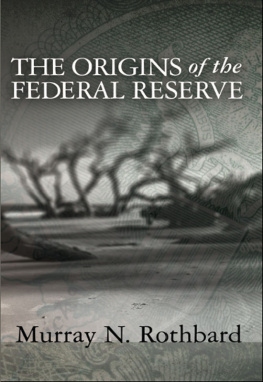Mitchel Y. Abolafia - Stewards of the Market: How the Federal Reserve Made Sense of the Financial Crisis
Here you can read online Mitchel Y. Abolafia - Stewards of the Market: How the Federal Reserve Made Sense of the Financial Crisis full text of the book (entire story) in english for free. Download pdf and epub, get meaning, cover and reviews about this ebook. year: 2020, publisher: Harvard University Press, genre: Romance novel. Description of the work, (preface) as well as reviews are available. Best literature library LitArk.com created for fans of good reading and offers a wide selection of genres:
Romance novel
Science fiction
Adventure
Detective
Science
History
Home and family
Prose
Art
Politics
Computer
Non-fiction
Religion
Business
Children
Humor
Choose a favorite category and find really read worthwhile books. Enjoy immersion in the world of imagination, feel the emotions of the characters or learn something new for yourself, make an fascinating discovery.

- Book:Stewards of the Market: How the Federal Reserve Made Sense of the Financial Crisis
- Author:
- Publisher:Harvard University Press
- Genre:
- Year:2020
- Rating:3 / 5
- Favourites:Add to favourites
- Your mark:
- 60
- 1
- 2
- 3
- 4
- 5
Stewards of the Market: How the Federal Reserve Made Sense of the Financial Crisis: summary, description and annotation
We offer to read an annotation, description, summary or preface (depends on what the author of the book "Stewards of the Market: How the Federal Reserve Made Sense of the Financial Crisis" wrote himself). If you haven't found the necessary information about the book — write in the comments, we will try to find it.
Mitchel Y. Abolafia: author's other books
Who wrote Stewards of the Market: How the Federal Reserve Made Sense of the Financial Crisis? Find out the surname, the name of the author of the book and a list of all author's works by series.
Stewards of the Market: How the Federal Reserve Made Sense of the Financial Crisis — read online for free the complete book (whole text) full work
Below is the text of the book, divided by pages. System saving the place of the last page read, allows you to conveniently read the book "Stewards of the Market: How the Federal Reserve Made Sense of the Financial Crisis" online for free, without having to search again every time where you left off. Put a bookmark, and you can go to the page where you finished reading at any time.
Font size:
Interval:
Bookmark:

STEWARDS of the MARKET
HOW THE FEDERAL RESERVE MADE SENSE OF THE FINANCIAL CRISIS
Mitchel Y. Abolafia

Cambridge, Massachusetts
London, England
2020
Copyright 2020 by the President and Fellows of Harvard College
All rights reserved
Design: Tim Jones
Front Photo: Ignacio Ayestaran / Getty Images
978-0-674-98078-5 (cloth)
978-0-674-24529-7 (EPUB)
978-0-674-24532-7 (MOBI)
978-0-674-24535-8 (PDF)
The Library of Congress has cataloged the printed edition as follows:
Names: Abolafia, Mitchel, author.
Title: Stewards of the market : how the Federal Reserve made sense of the Financial Crisis / Mitchel Y. Abolafia.
Description: First. | Cambridge, Massachusetts : Harvard University Press, 2020. | Includes index. | Summary: Mitchel Abolafia goes behind the scenes with the Federal Reserves powerful Open Market Committee as it responded to the 20082009 financial crisis. Relying on verbatim transcripts of closed meetings, Abolafia shows how assumptions about self-correcting markets stymied the Fed and how its leaders came to embrace new ideasProvided by publisher.
Identifiers: LCCN 2019044032
Subjects: LCSH: United States. Federal Open Market Committee. | Board of Governors of the Federal Reserve System (U.S.) | United StatesEconomic conditions20012009. | United StatesEconomic policy20012009. | United StatesEconomic policy2009
Classification: LCC HC106.83 .A26 2020 | DDC 330.973/0931dc23
LC record available at https://lccn.loc.gov/2019044032
To Amy
Of course, the big developments since our last meeting were in financial markets. We seem to be repeatedly surprised with the depth and duration of the deterioration in these markets; and the financial fallout from developments in the subprime markets, which I now perceive to be spreading beyond that sector, is a source of appreciable angst.
FOMC TRANSCRIPT, AUGUST 7, 2007, 31
I was thinking that Edward R. Murrow said that anybody who isnt confused really doesnt understand the situation [laughter]. Im confused, and I dont understand the situation.
FOMC TRANSCRIPT, DECEMBER 11, 2007, 60
We are in uncharted waters, but we are groping our way forward.
FOMC TRANSCRIPT, DECEMBER 1516, 2008, 198
Surprise. Confusion. Groping forward. These are the reactions of policymakers at the Federal Reserve in the midst of dealing with the financial crisis of 2008. They are frank acknowledgments of the difficulty involved in the interpretation of a breach in the fabric of accustomed expectations. They reflect the vulnerable sentiments of colleagues addressing each other. These colleagues share a responsibility, not only to understand the breach, but to mitigate its consequences. The surprise, confusion, and groping toward an interpretation can be described as sensemaking, a term that refers to the moment when people, in this case policymakers, ask the question, Whats going on here? This moment occurred repeatedly over the course of the financial crisis when Federal Reserve (the Fed) policymakers were confronted by unexpected and often ambiguous circumstances.
It is rare that we catch sight of policymakers in the midst of sensemaking. Such deliberations usually occur beyond the public gaze. An unusual opportunity is afforded by the existence of verbatim transcripts of policy meetings that include all seven of the governors of the Federal Reserve and the twelve presidents of its regional Reserve Banks. The policymakers meet every six weeks to search out shifts in the economy and to adjust the supply of money and credit consistent with the Feds mandated goals of price stability and maximizing employment. As such, the Federal Open Market Committee (FOMC) is designed for collective sensemaking. During a crisis, the urgency of that sensemaking is magnified. The existence of the transcripts allows us to map the changing content of sensemaking to see how the policymakers understanding of events evolved and to examine their changing justifications for actions taken and not taken.
Sensemaking during the crisis did not occur in a vacuum. It was a social process. The policymakers not only received volumes of data and analysis from their staffs, they also met with business leaders, they read private-sector analyses of the situation, and, of course, they influenced each other.
In the ensuing analysis, my purpose is to understand the Feds unfolding interpretation of the financial crisis. In this sense, analytic discretion (sensemaking) was the default option.
Current research suggests that Fed policy adhered more closely in recent years to a neo-Keynesian framework but not a formal model.
The mechanism for control of the money supply has changed over the course of US history. This change has generally been in the direction of increased government control over the market for money, but it has not been without conflict. There has always been a tension between the appropriate functions of the market and the state. Farmers, merchants, bankers, and political parties representing their interests have contested the appropriate means and degree of control by the state. The conflict over control of monetary policy can be divided into three stages: market-based control, bureaucratic control, and technocratic control. A short digression into history will orient our understanding of the Feds response to the financial crisis.
Market-Based Control. The Constitution of the United States, when written in 1787, gave the federal government the power to coin money and regulate the value thereof. Such legal tender could be used to pay off all obligations. This system was considered self-regulating in that the supply of currency in the economy would not grow without an increase in the supply of the precious metal on which it was based. As such, the Founders contemplated no other regulatory device. But the Constitution was better designed to maintain political stability than economic stability, and economic interests were rarely content to rely solely on the benefits of self-regulation.
The supply of precious metals was not a reliable source of economic stability. The monetary history of the nineteenth century is one of severe dislocation wrought by the bank panics of the 1830s, 1870s, and 1890s, when depositors lost confidence in the banks ability to deliver their cash. The money supply, tied to the supply of gold, was not flexible enough to meet spikes in demand, such as those triggered by droughts and floods. Large numbers of businesses failed and individual savings were wiped out in runs on the banks. Political conflict over how the currency should be valued was nearly continuous.
Bureaucratic Control. The Panic of 1907, in which J. P. Morgan famously tried to mobilize the urgently needed monetary liquidity, provided the critical incentive needed for the creation of a central bank. Morgan announced that he could no longer be expected to rescue the banking system in a panic. Reform-minded businessmen and bankers designed a central bank that would allow them to build their firms while avoiding unmanageable panics. In the final legislation, enacted in 1913, a system of eight to twelve regional Reserve Banks was to be created and run by the regional bankers, overseen by a board of governors in Washington. Although the degree of banker control was to erode over the course of the twentieth century, the long efforts of the banking community paid off with the creation of a central bank that could furnish an elastic currency that could be expanded when needed, thereby creating enhanced financial stability.
Font size:
Interval:
Bookmark:
Similar books «Stewards of the Market: How the Federal Reserve Made Sense of the Financial Crisis»
Look at similar books to Stewards of the Market: How the Federal Reserve Made Sense of the Financial Crisis. We have selected literature similar in name and meaning in the hope of providing readers with more options to find new, interesting, not yet read works.
Discussion, reviews of the book Stewards of the Market: How the Federal Reserve Made Sense of the Financial Crisis and just readers' own opinions. Leave your comments, write what you think about the work, its meaning or the main characters. Specify what exactly you liked and what you didn't like, and why you think so.






